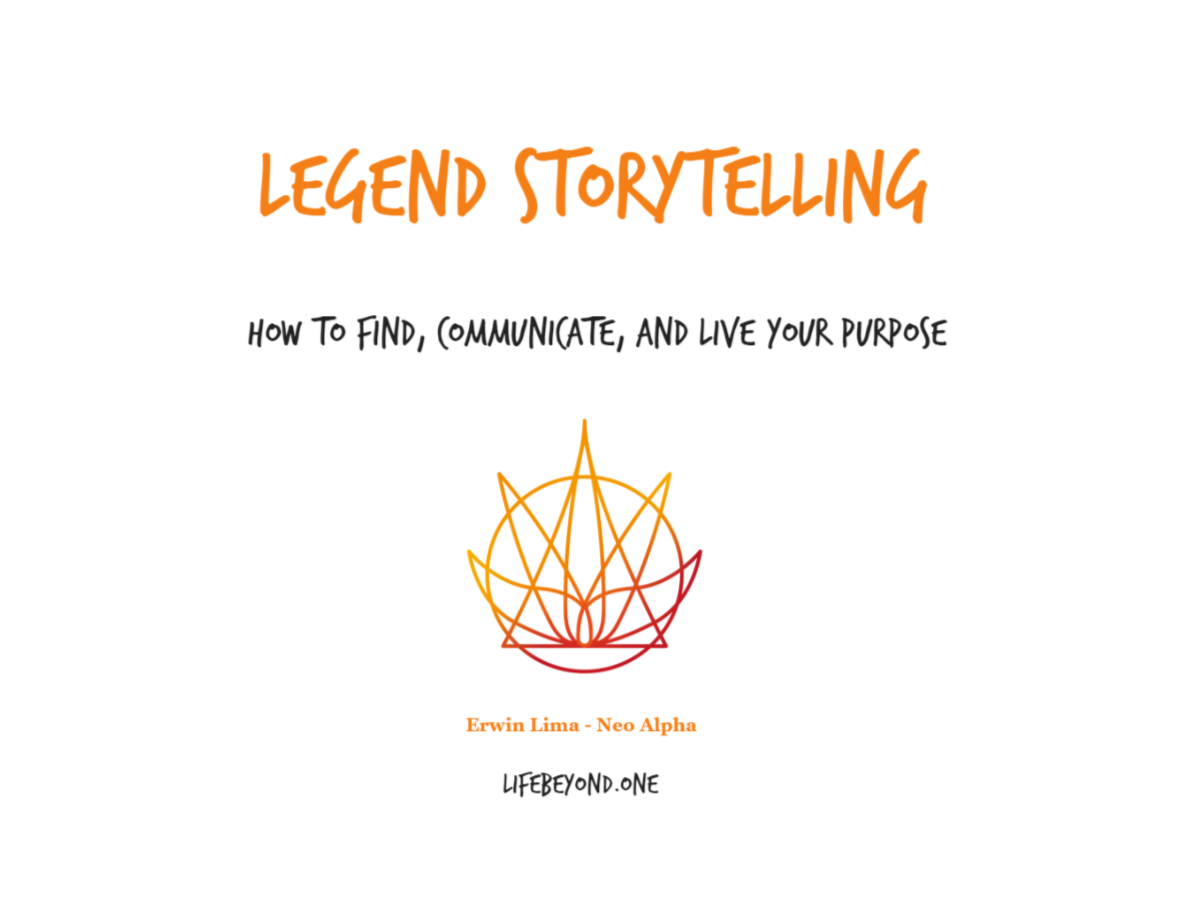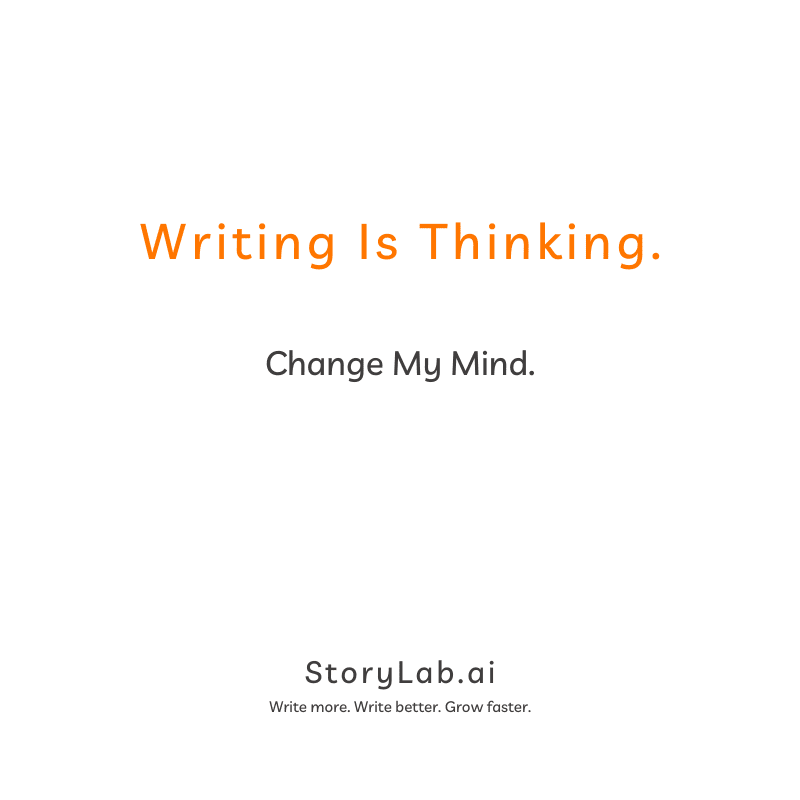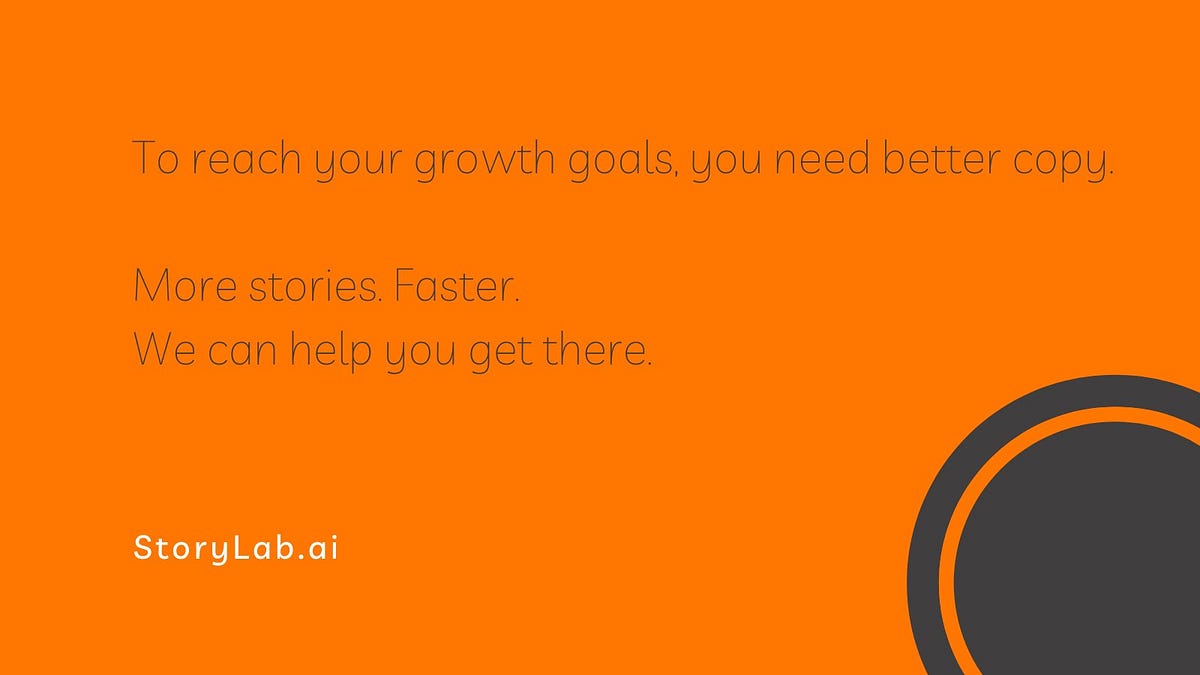7 Things I Learned about Writing from Teaching it, that I would Never Have Learned Otherwise
Why you should write more, how to do it, and how to achieve your goals with writing

I have been in the business of writing for 10 years now. I like to see myself as a Master-Student of the craft.
In those ten years, sure, I’ve helped countless businesses increase their reach, improve their story and clarify their Purpose for themselves and their audience. I’ve helped improve interaction and web traffic, and helped gain more leads and sales.
I’ve generated hundreds of thousands of words in service to others, helping them grow, and helped generate millions in sales — doing my humble part of the magic.
The magic of human connection and growth. Through storytelling.
I wrote and published two books in the meantime, reached thousands, won an award, and have a third book in the works as we speak.
But all of that experience could never have taught me what trying to teach others how to do what I do, finally taught me. Humbling.
Want to get better at something you’re already pretty good at?
Deconstruct and then reconstruct your explicit and implicit knowledge, and share this knowledge with others. Then keep adding more knowledge.
What happened that supercharged my learning about writing
I had been working at Dutch top-X Microsoft partner Motion10 for a few years, and more and more of my co-workers were starting to find their way to me with questions of ‘how to write better’, ‘how to write more easily’, and the evergreen ‘would you review this email?’.
Which is great, of course — it’s always nice to be recognized for something you’re good at, which often overlaps with what you’re passionate about. As in the case of me, and writing.
Having a background in educational psychology and being very involved with Identity and Culture in the organization helped. I had been happily involved in the creation and sometimes execution of various workshops and training programs for coworkers, often for onboarding purposes.
But then something happened that I didn’t see coming.
My marketing and recruitment coworkers and I were creating a program to get more of our very knowledgeable coworkers to share their knowledge in the form of content that would be helpful to our target audience, and at the same time make Motion10 and its consultants look great. A term that marketers use for this tactic is “Employee Advocacy”.

But what happened next was kind of a surprise. In the strategic and tactical setup of that program, it became clear that many of the coworkers we wanted to nudge toward creating more blogs, social posts, and videos sharing their knowledge and experience — needed some help themselves, first.
It turned out, a lot of them didn’t feel comfortable telling a story. Even if that story was their own, built up out of their own expert knowledge and experience. And even if that expertise was top-notch, high ticket consultancy knowledge that otherwise people were paying a lot of money to get access to.
Now, how to solve this problem?
Seven Things I learned from teaching writing
Creating the Employee Advocacy program for Motion10 and the subsequent creation and execution of my first writing course gave me some invaluable insights into my own craft.
After that, I’ve taught a few more small classes with my continuously growing and improving knowledge and understanding of writing. I’ve written a lot about writing. And finally, recently I concluded a pilot with 10 students for my upcoming program called “Legend Storytelling: How to Find, Communicate and Live your Purpose” in which, as the name suggests, storytelling and writing have powerful parts to play.

What I learned about writing and storytelling in the creation and sharing of these programs, can be summed up in the following seven points:
1. Writing and Storytelling mean trusting your own knowledge and experience and understanding the value it can hold for others
As in the case of my Motion10 coworkers. But then also for entrepreneurs I’ve coached on building up a brand for themselves. And guess what, for myself just as much.
It seems to be a hurdle for most people to simply trust the knowledge they hold to be valuable to others. The trick is to truly look at yourself from an outsider’s perspective. People around you have asked for your help in certain areas all of your life. If you’ve paid a little attention, you’ll know what areas those are. Hint: these will often have something to do with whatever it is people pay you for.
What problems or obstacles have you encountered in your work and life? What solutions did you finally arrive at? What lessons have you learned that have proven very helpful? What experiences or stories made an impression?
Start there.

2. Writing means trusting yourself and seeing the value you can hold for others — even when you’re not perfect
There’s a deeper insecurity that’s connected to the insecurity of not trusting your own knowledge.
I figured this out talking to some students that were experiencing major blockage in doing even the simplest, smallest writing exercises, and reflecting together with them.
And through a little soul-searching of my own.
There’s a deeper insecurity than the ‘non-writer’s block’ that so many aspiring writers, bloggers, vloggers et cetera experience, which literally blocks them from writing a story or script beyond the first few words — for fear of it not being perfect. Or for fear of spelling mistakes or grammar snafus.
Not writing as much, and certainly not publishing or sharing your stories, in truth, often is a reflection of a deep fear of not being perfect yourself. Which, if you think about it, is not only irrational —
It’s actually the fear of simply not being (deemed) good enough, and valuable enough. Which is, I believe, the quintessential fear for individuals of a species that has survived and thrived because of social bonds and in tribe contexts. Because of storytelling.
The solution to this problem, I think, lies in the following two realizations:
- We’re intrinsically valuable to our tribe. Diversity makes for more options and hence better solutions to problems, this has been proven over and over again. But to add to that process, we need to let our voices be heard.
- We’re more valuable to our tribe and to those around us, when we try to be — and allow their feedback to tell us what they need more of, and what they need less of from us.
3. Writing means getting out of your head and into your heart, and then back into your head again.
This is something that I’ve had to learn, the hard way, over the past few years.

My fiancé is my greatest fan, but also my harshest critic. This applies everywhere, and certainly in my writing. Like Hank Moody and Karen, if I write something that matters, I’ll know if it’s good if she reads it and tells me it is.
My fiancé had been pointing at a problem in my writing for a few years, and feedback from others, data, and books, videos and articles I was consuming were pointing in the same direction:
I was missing out on heart.
My writing was often highly strategic, well-thought-out, and very clearly structured. But it lacked heart, it lacked that urgency that writing needs to get the point across and to get people to want to take action.
And getting people to take action based on your stories is often what you really want — if you realize it or not.
4. Good storytelling can only be measured by the (strategic) objective it is used to achieve
Everybody I come across wants to or would like to become a ‘better writer’. But what does that mean?
What constitutes good storytelling? Or good writing?
The short and easy-off answer is: there is no one way to define that.
The real answer, at least in my book, is: it depends on what you’re trying to achieve. This is crucial.
There is often a specific goal that you’re trying to achieve when writing, presenting, or simply having a chat. But it’s often implicit. To make your writing better, you need to know how to measure if you’re reaching your goal. For that, you need to know what your goal is, first.
5. Storytelling and writing, and programs that teach them too often overlook strategic goal setting
And this is what so many people miss, even some of the most popular books and courses on writing. Implicitly there is often a specific goal you want your writing to serve. In my writing method, this is the thing that you make explicit at the start of your writing exercise.
Why? We humans communicate naturally. We do that, in order to achieve many different things. To connect and feel like we’re part of something greater than our little lonely selves.
To get ahead; to change something in our lives or the world and/or to help others — which oftentimes are one and the same thing. To get to where we need to go, to grow, we need the help of others. And to get the help of others, it often works best if we offer our help in return, based on a mutual goal or a mutual benefit.
We are often our best when we help others in the ways that we are uniquely able to help.
So, your strategic goal in your writing or storytelling should be to connect your goals to the goals of your intended audience. This is where you should start:
- What do I want to achieve (Purpose/Mission/Goal)?
- What does my reader/listener/conversation partner/audience want to achieve (and have I actually asked them)?
- Where do these two goals come together?
From this, it will follow that your goal for this specific piece of writing, or for this specific presentation, e-mail or chat can be one or a combination of many things: a lot of views or shares; for someone to click on a specific link or get in touch with you for a specific offer; for them to agree to a proposal or project, et cetera.
What you explicitly want to achieve and the degree to which your writing helps you do that, is the only measure you really need.
If the writing is pretty, and people compliment you on it, that’s a nice bonus.
6. Writing is meditative and therapeutic
I set out to create the book of books, when I started preparing and outlining my upcoming book, “Legend Storytelling: How to Find, Communicate and Live your Purpose”.
In it, I wanted to combine my knowledge (and that of a bunch of other, way smarter people) of psychology and human potential, and of (brand) identity and storytelling. Interesting mix, right?
As I was wrapping up my research phase, I was startled by something.
One of the most popular psychologists of our day, Jordan Peterson, was offering a program that he labeled a ‘Self-authoring program’, that was eerily doing something very close to what I had envisioned my book and the embedded program would do for readers.
I did a little bit of extra research, and unearthed that I was far from the only one who was uncovering this fact:
Writing can be meditative and therapeutic. There are scores of inspiring people — among which some notable Stoics and Silicon Valley men — and heaps of scientific studies that attest to that fact.
And this truly does not only apply to mindfulness journaling and self-reflective writing (which are both practices that I encourage and that are a part of my method). This can apply just as much to writing for an audience of more than one.
Even writing a blog for your corporate website or one-man business can be therapeutic, be it as a side product. And this has to do with the essence of writing; what it is that writing is, at its core.
7. Writing in its essence is a process of structuring your thoughts and feelings
Writing is thinking.
There has been this very old trope, that people who write a lot, must be very smart. I think there’s some truth to that.
Writing, crafting stories, and doing so with intent — with a goal, and with attention to improving your skill at reaching your goals — forces you to do something.
The five principles of writing that I teach are the following:
- You want to come across as confident so people will trust what you’re saying.
- You want to be understood.
- You want people to feel something.
- You want to be remembered.
- You want people to be inspired and/or to take action.
These are the basic five things you want to achieve in your storytelling, that will help you to reach your goals once you’ve made your implicit goals explicit.
There is one main thing you need to do to be able to check these five boxes:
You need to structure your thoughts.

What is it you really want to achieve with this story? Who are you helping? How can they help you, where do your Purposes and goals meet?
What is the main thought and the connected main feeling you want to get across? What are no more than three supporting thoughts (more if you’re creating a listicle) that support your main thought, and what is the logical following order to introduce them in?
What are things that at first you feel you need to add or include in the story, but that you could actually better omit to make the structure more clear?
The bulk of the work in writing is actually not in putting pen to paper, or finger to keypad, or voice to voice recorder.
The bulk of the writing is actually done in your head — although I suggest using a notepad or something to help you in the process. Answering the above questions. Ordering and structuring, strategically weighing your feelings and thoughts.
And that’s how I believe writing more actually does make you smarter. Smarter in the sense that writing is a workout for your brain. And smarter in the sense that being smart means improving your chances of reaching your highest goals.
This thought process of writing for sure makes you look and sound smarter, when you communicate.
But maybe the biggest win, next to reaching your external goals, is the feeling of inner peace and a tidied-up mind space when you’re done.
Thank you for reading. Write more, my friend.
This story was originally posted at StoryLab.ai.

Write more. Write better. Grow faster. Learn more about how to do that at StoryLab.ai.
Live a more balanced life by using technology in a different way. Start with “Life Beyond the Touch Screen at www.lifebeyond.one.
More from me, here on Medium? Check out some of my best-read stories:
Summary, Review and Best 5 Takeaways in Under Ten Minuteslimawrites.medium.com
#1: Good writing is that which helps you and your readers reach your respective goalsmedium.com
We’re (only) humanlimawrites.medium.com
The Storytelling Method that has helped tons of individual storytellers and brands reach their growth goals Image…lifebeyond.one
The Benefits and ROI of creating a Purpose-based Legend Storymedium.com
Maximizing the Value of Our Time, Attention, Energy and Techmedium.com
(1/8) Make your brand more authentic, purpose-driven, and human — with the help of techmedium.com
8/8 Conclusion: Why Redefine your Brand Now?medium.com
